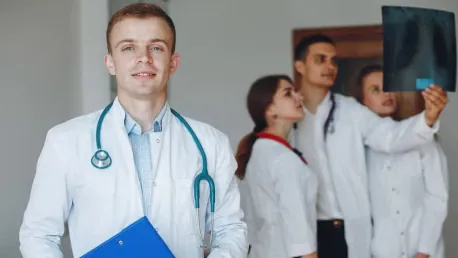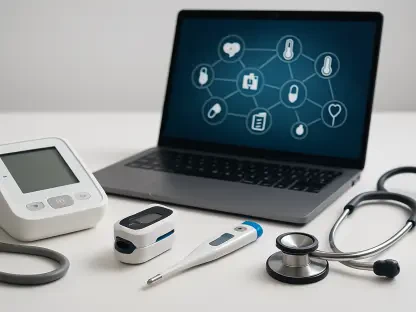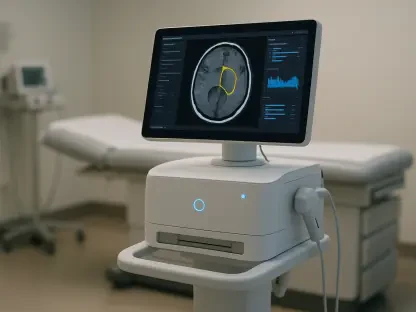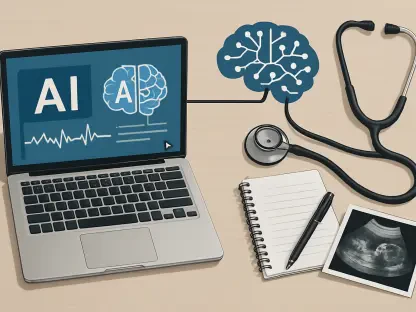Radiology is a field that has significantly evolved over the years, driven by technological advancements and increased demand for diagnostic services. Despite its critical role in healthcare, radiology faces significant hurdles when it comes to attracting new talent. A recent survey conducted in August 2023 involving over 400 medical students revealed that misconceptions about radiology deter many from choosing it as a specialty. This article delves into the impact these misconceptions have on medical students’ career choices and discusses strategies to overcome such barriers. The findings underscore the necessity for strategic changes in medical education and recruitment to ensure the future of radiology.
Factors Attracting Medical Students to Radiology
Work-Life Balance and Impact on Patient Care
One of the main factors drawing medical students to radiology is the promise of a favorable work-life balance. The survey indicated that 19% of respondents were interested in pursuing radiology, largely due to the perception that it offers predictable hours and less on-call time compared to other specialties. Additionally, radiology is often perceived as less physically demanding, making it an appealing choice for those looking to balance their professional and personal lives. This aspect of radiology can be particularly attractive to medical students who are conscious of the potential for burnout in more demanding specialties.
Another significant factor is the impact on patient care. Medical students recognize that radiologists play a crucial role in diagnosing and managing a range of medical conditions. The ability to make accurate diagnoses through imaging technology can be immensely satisfying and impactful on patient outcomes. The intellectual challenge and problem-solving component of radiology further heighten its appeal. Students appreciate the blend of technology and medicine, which allows them to remain at the forefront of medical advancements while directly contributing to patient care.
Work Environment and Minimal Patient Contact
The work environment in radiology is often seen as a controlled and predictable setting, which can be very appealing to medical students. Unlike other specialties where the work environment can be chaotic, radiologists typically work in a more structured setting. This allows for focused, meticulous work with advanced imaging technology. For students who prefer a structured and less erratic work environment, radiology presents an ideal choice. Furthermore, the opportunity to work with cutting-edge technology adds an element of excitement and continuous learning.
Moreover, some students are attracted to radiology due to minimal direct patient contact. For individuals who are less inclined towards patient interaction, radiology offers a unique specialty where patient care is still central, but the interaction is indirect. This is particularly appealing for those who are more introverted or prefer to concentrate on technical and analytical aspects of medicine. The procedural nature of radiology, involving techniques like ultrasound, MRI, and CT scans, provides a tangible and hands-on experience without the extensive patient engagement seen in other fields.
Misconceptions Dissuading Students from Radiology
Concerns About Artificial Intelligence
Despite the attractive elements, misconceptions about radiology substantially contribute to students’ hesitation in pursuing this specialty. One of the most prevalent concerns is the impact of artificial intelligence (AI) on the field. Many students fear that AI advancements could replace radiologists, leading to job insecurity. The notion that AI might render radiologists obsolete is a significant deterrent. These fears are amplified by discussions in the media and academic circles about the growing capabilities of AI in interpreting medical images.
However, these concerns may be unfounded. While AI has made considerable progress in radiology, it is widely regarded as a tool to aid radiologists rather than replace them. AI can handle repetitive and mundane tasks, allowing radiologists to focus on more complex and interpretative aspects of their work. Improved efficiency and diagnostic accuracy through AI could enhance the role of radiologists rather than diminish it. Addressing these misconceptions is crucial in reassuring students that radiology will continue to offer rewarding and stable career opportunities.
Radiation Exposure Fears
Another significant misconception revolves around the perceived risks of radiation exposure. Students often express concerns about potential long-term health risks associated with working in an environment with frequent exposure to radiation. These fears are rooted in a lack of understanding of safety protocols and advancements in radiology that have minimized such risks. The perception of radiology as a high-risk specialty in terms of radiation exposure can deter students from considering it, despite the reality being much safer than they imagine.
Advancements in imaging technology and the stringent safety measures implemented in radiology settings have significantly reduced the risks of radiation exposure. Medical students need comprehensive education on these safety protocols to better understand the low levels of risk involved. By demystifying these concerns and providing accurate information, medical educators can help students make informed decisions about pursuing radiology. Addressing misconceptions related to radiation exposure is essential to attract and retain talent in this critical healthcare field.
Strategies to Overcome Misconceptions
Enhanced Clinical Exposure
To tackle these misconceptions effectively, enhanced clinical exposure to radiology during medical training is paramount. Students often make career decisions based on their clinical experiences; therefore, integrating radiology more thoroughly into the preclinical curriculum can provide them with a clearer understanding of the field. Exposure to the day-to-day work of radiologists, combined with hands-on experience with imaging technologies, can help dispel myths and highlight the specialty’s rewards. By incorporating radiology rotations earlier in their education, students can develop a more accurate perspective of what a career in radiology entails.
Moreover, mentorship programs that connect medical students with practicing radiologists can be instrumental in overcoming misconceptions. These programs offer students the opportunity to ask questions, receive guidance, and see firsthand the realities of the profession. Mentors can address common concerns about AI and radiation safety, provide insights into work-life balance, and share personal experiences that underscore the value and stability of a career in radiology. Establishing these connections can be a powerful tool in shaping students’ career choices positively.
Revised Educational Approaches
To overcome misconceptions, revised educational approaches are crucial. Medical schools should incorporate comprehensive radiology coursework into their curricula, emphasizing the advancements in imaging technology and safety protocols. Workshops, seminars, and guest lectures by experienced radiologists can provide valuable insights into the field. Additionally, collaboration with radiology departments for research opportunities can spark interest and debunk myths. By fostering a deeper understanding of radiology’s evolving landscape, education can play a key role in aligning perceptions with reality.
Addressing these barriers is imperative for the future of radiology. A more informed perspective could encourage more students to consider this rewarding field, ultimately meeting the ongoing need for skilled radiologists in the healthcare sector. This approach will help bridge the gap and ensure the specialty continues to thrive.









